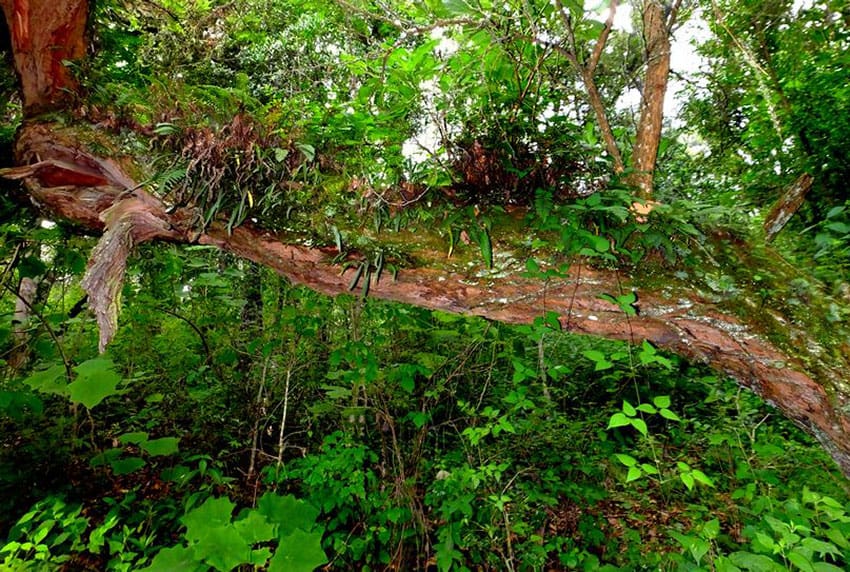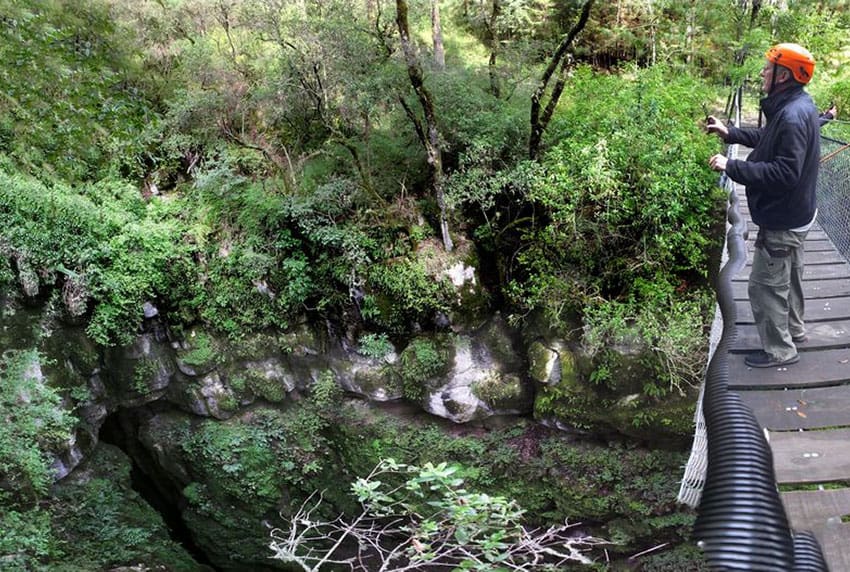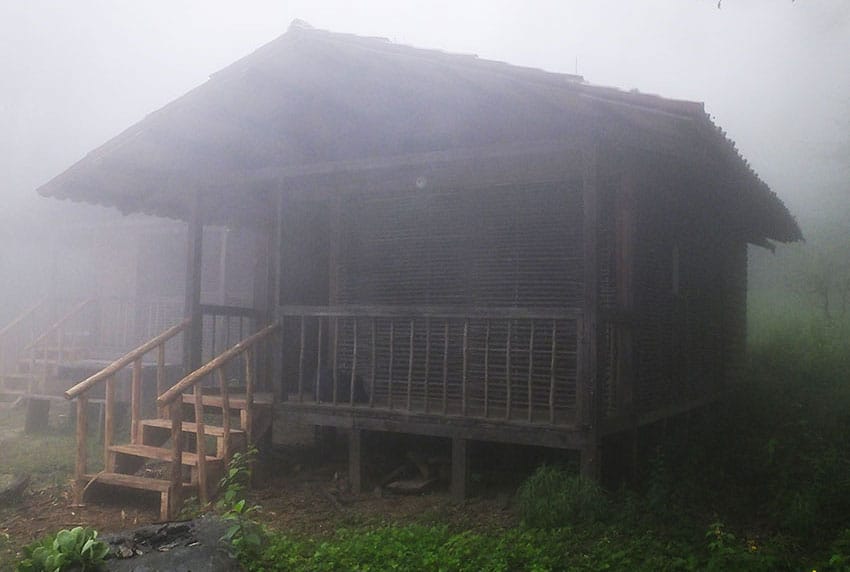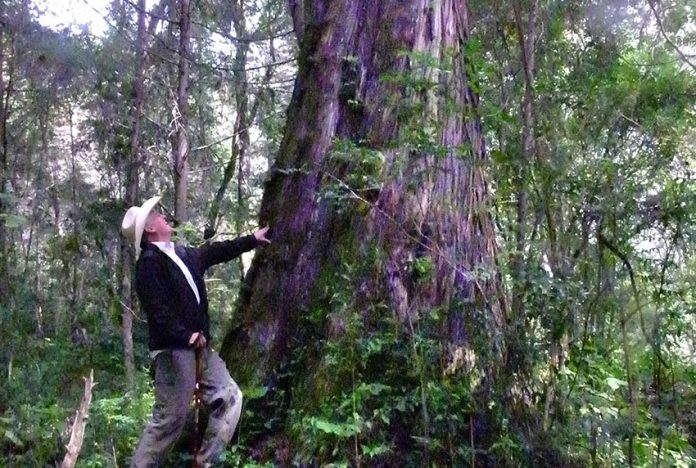The Manantlán Biosphere Reserve is a 2,860-meter-high mountain range located 150 kilometers southwest of Guadalajara, straddling the states of Jalisco and Colima. The area was declared a reserve in 1987 and a year later was internationally recognized as such by UNESCO.
When I discovered that a friend of mine, Sergi Gómez, was leading tours to Manantlán, I decided to go have a look.
One Saturday morning I set out from Guadalajara and after two hours reached the home of Gómez on the outskirts of Colima. We caught my friend busy working on the construction of his new hyperadobe house, built from hundreds of earth-filled mesh bags, stacked one upon the other, igloo-fashion.
Gómez is the head of Aventura Camp Colima. When I asked him about the Sierra de Manantlán, he said, “This area drew worldwide attention in 1979 when a primitive, perennial corn called Zea diploperenis was discovered there. The local people call this milpilla or chapule and most botanists agree it is probably the original species of corn that all the hybrids in the world are descended from.
“This discovery got scientists investigating the sierra, and what they found was an astonishing number of other rare plants endemic only to Manantlán. So the University of Guadalajara decided to set up a research station there and now we know that there are five ecosystems operating up and down those mountains. Over 2,900 species of plants have been identified there as well as 110 species of mammals and 336 species of birds. All this adds up to a truly unique site. I’ve traveled around to all of Mexico’s national parks and in my book, Manantlán is the most beautiful.”

Gómez told us there were two ways to reach the indigenous village of Terrero, population 300. One route, he said, is entirely paved. “The other,” he stated, “is much steeper and a good part of it is just a narrow dirt road with a high wall on one side and a sheer 500-meter drop on the other. You do have four-wheel drive, I hope? With brakes in perfect condition? I’ve seen a number of abandoned cars and trucks on that road, all of them parked with their front wheels up tight against the wall.”
In spite of this gruesome scenario, Gómez recommended we go up to Manantlán via one road and come down the other, “in order to have a complete experience.”
We decided to ascend via the paved road. Along the way we spotted a sign in the shape of a big fish. This was a restaurant where — Gómez had told us — we could eat delicious homegrown tilapia.
“We ought to stop here on the way down,” I told my friend Richard.
“Unless, of course, we take the other road back,” he replied with a gleam in his eye.
We soon discovered that the paving of our one-lane road had been done in a minimalist style. Two parallel strips of concrete had been laid down and too bad for you if your wheels were wider apart. Not terribly helpful were occasional road signs that seemed to say, “Please narrow the distance between your tires.”

As we rose little by little in altitude, the foliage kept changing. This was so fascinating that we found ourselves stopping again and again: “Look, on the tree branches: orchids, bromeliads, lichen, Spanish moss!”
At last we reached Terrero, altitude around 2,222 meters, where we saw lots of cabins for rent, but no people. We soon discovered that everyone was at the funeral of one of the best-loved members of the community. Nevertheless, someone immediately came to show us to our cabin which, we were happy to discover, was located 300 meters from the main road, in a quiet spot at the end of a rustic brecha.
“Disculpe,” we were then told, “but you’ll have no lights tonight. We have solar panels here, but someone stole the battery.”
The water was another thing that wasn’t working that night but fortunately we had come prepared for camping and I suggest anyone planning to sleep in Terrero ought to be equally ready for anything.
Since the per-person cost of one of these cabins is only 200 pesos per night, we felt we couldn’t complain and off we went for a delightful walk in the woods, cheered on by the incredible song of a clarín jilguero (brown-backed solitaire), which sounds a bit like three flutes being played simultaneously.
Well, that walk convinced us that Sergi Gómez was right in calling Manantlán unique. The foliage was truly exuberant and we spotted all kinds of mushrooms, including some blue ones we were later told are good to eat. Upon our return, our cabin was suddenly shrouded in fog. This vanished as quickly as it came and as the sun set we heard a bizarre cry which we were at first convinced was of human origin. It turned out, in the end, to be the call of a lonesome Herpetotheres cachinnans or laughing falcon.

On Sunday a local guide named Leopoldo took us to a hanging bridge rigged over an 85-meter-deep doline, a funnel-shaped hole very typical of these limestone hills, frequently including a deep, narrow shaft at the bottom.
Manantlán is, in fact, famed for its hundreds of vertical caves, most of them occurring at the bottom of dolines, and this hanging bridge is a clever way to introduce tourists to this typical geological feature. For safety’s sake, each visitor dons a harness and a helmet and clips into a steel cable before venturing onto the swaying bridge.
Our next stop was el Mirador del Filete lookout point from which, it is said, you can see the Pacific on a clear day. The view, in fact, turned out to be magnificent, but equally so was the half-hour walk to get there. So many strange plants, insects and mushrooms did we see that, in my opinion, the walk alone deserves five stars.
Now it was time to decide whether we would go home the way we came or risk the scary-sounding, ultra-steep route via the little village of Campo 4. I reminded Richard of that wonderful tilapia restaurant, but — naturally — we had to go check out the looks of the partially paved road.
In Mexico, of course, unforeseen factors are forever influencing the next turn of events.
Who did we find standing at the edge of the cliff but a hitchhiker name Paz, who told us that the questionable road was actually in very fine shape, a snap for a 4WD like ours.
[soliloquy id="90439"]
So, down the steep camino we crept, again stopping over and over to gasp at the amazing changes in flora we encountered every 10 minutes as we descended. Thanks to Paz, we learned there was a great restaurant at Campo 4, one we would never have spotted because it has no sign. Thus we were introduced to Cocina Economica Mari and the delicious dishes of María Engracia Pedraza Orozco, a prize-winning cook in Colima.
So ended our adventure, with an unexpected gourmet meal perched on the side of a nearly vertical precipice at the southeast end of the never disappointing Sierra de Manantlán.
Only upon my return did I learn that we had visited only a little corner of the biosphere reserve and had come nowhere near Las Joyas Research Station, an omission which I hope to remedy in the near future.
• To follow the route described here, see Terrero Loop Manantlán.
The writer has lived near Guadalajara, Jalisco, for more than 30 years and is the author of A Guide to West Mexico’s Guachimontones and Surrounding Area and co-author of Outdoors in Western Mexico. More of his writing can be found on his website.
